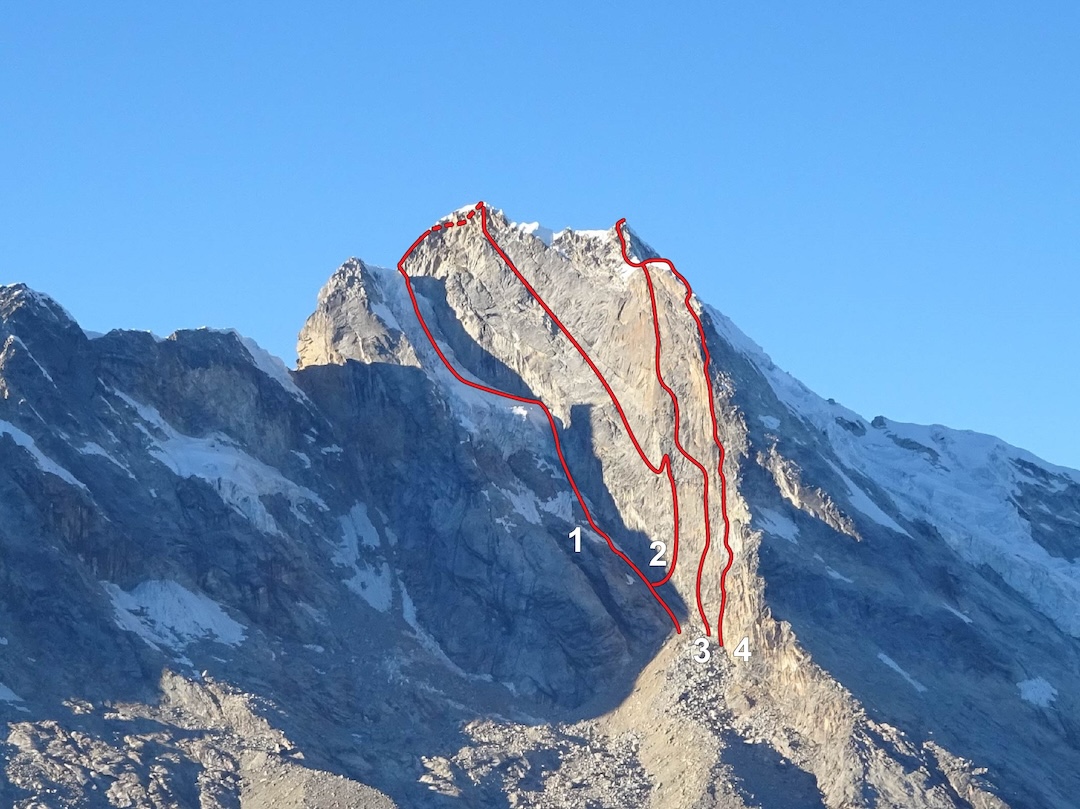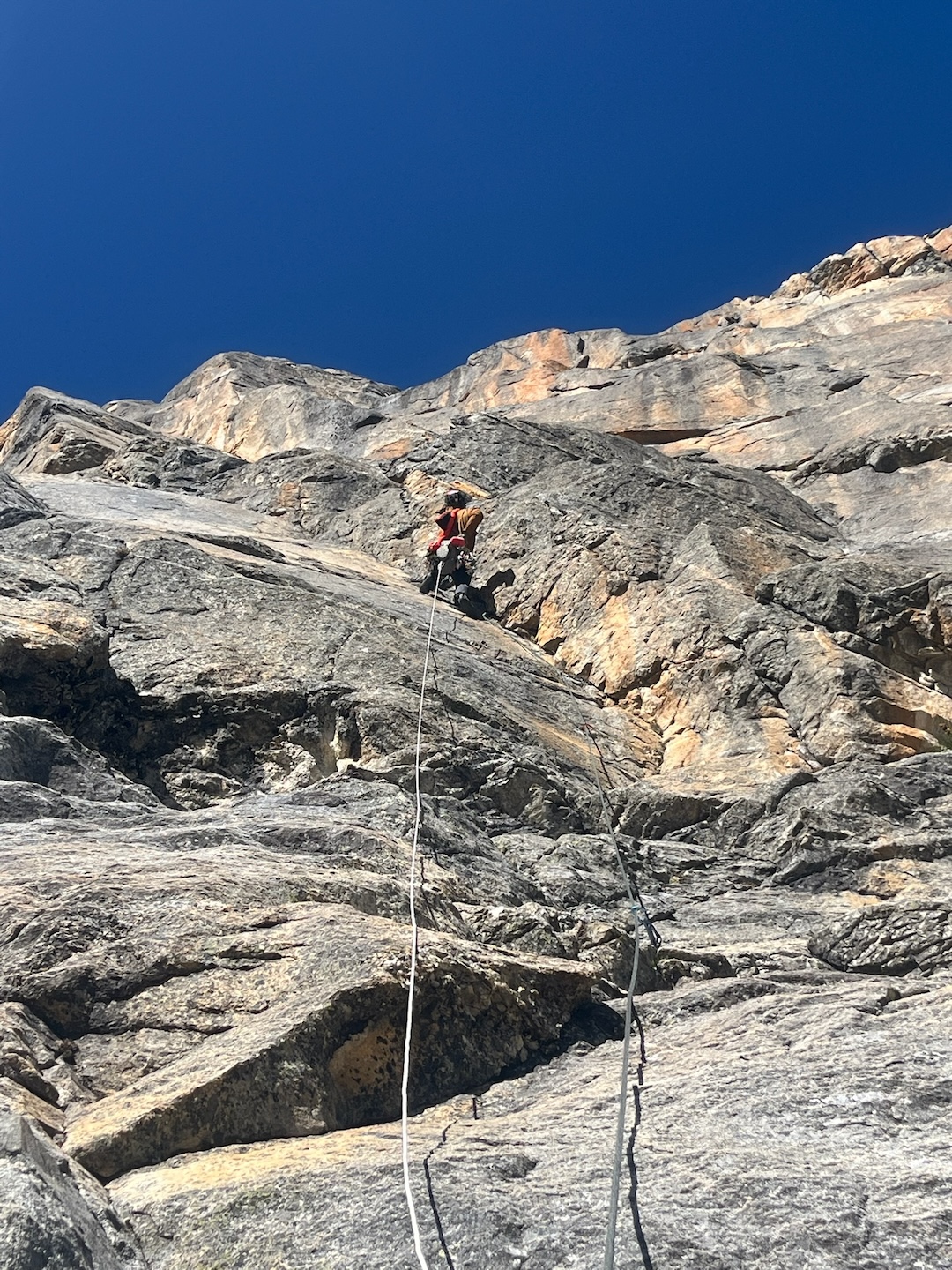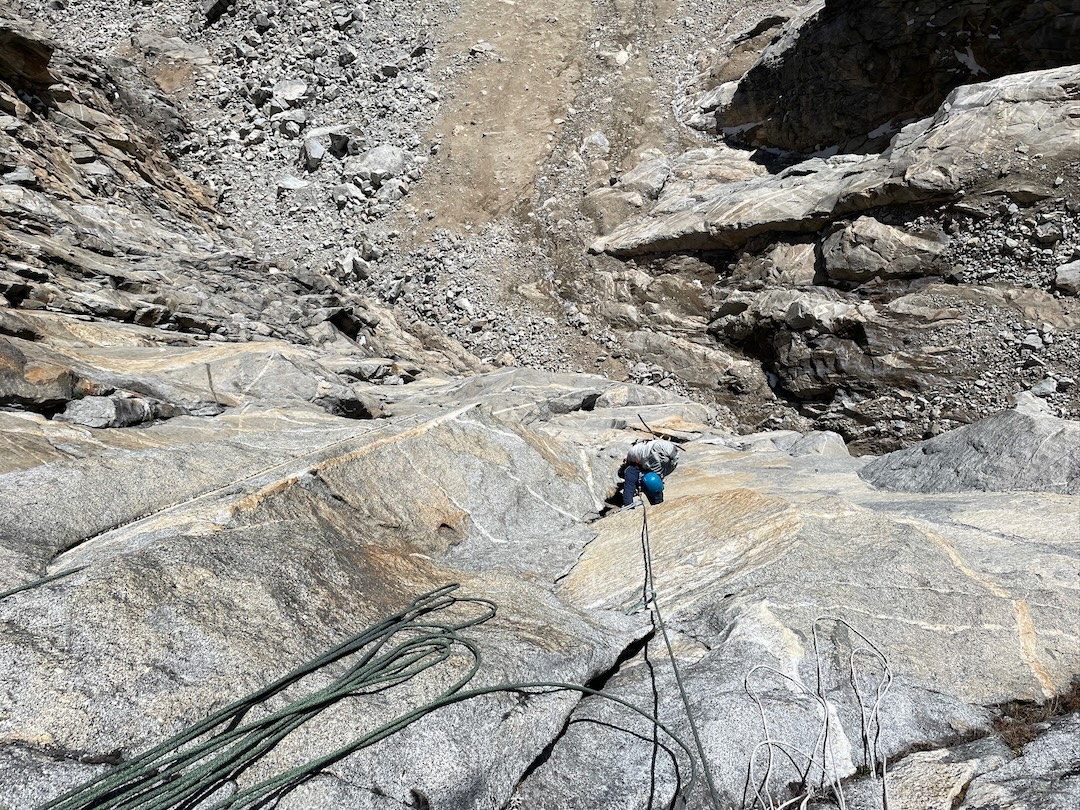Cashan Oeste, Northeast Face, La Suerte Viene La Suerte Se Va
Peru, Cordillera Blanca
Our original plan was to attempt the unclimbed southeast face of Huantsán (6,395m). However, Mike Bowyer and I realized that abnormally warm temperatures, combined with a very lean snowpack, made that face quite dangerous, so we decided to look for other objectives.

After some high-altitude sport climbing and acclimatization on Vallunaraju (5,700m), Mike and I decided to check out the northeast face of Hualcán (6,122m). There was a beautiful unclimbed line in the middle of the face, the rock quality was amazing, and the temperature tropical—but frequent rockfall drove us off the face after one bivy.
Back in Huaraz, after a few days of our “cruising-around-town-looking-for-the-best-fried-chicken” recovery routine, we made plans for an appealing unclimbed line in the middle of the northeast face of Cashan Oeste (5,732m). This face had a few lines on the right side, reaching the northern foresummit, and the original line on the left that climbed the glacier to the main top. In the middle was a big gap, and a line of weakness seemed to lead straight to the true summit.
A couple of days later, Mike and I were standing at the base of the wall. The face was steep, and the rock quality was outstanding. After building a bivy platform in the boulderfield at the base, we stared at the wall, mentally connecting lines. Most of the crack systems seemed to peter out after a rope length. Tired of speculating, we made food while enjoying the beautiful sunset and went to bed.
We woke at 4:30 a.m. on July 12 and started climbing as the sun hit the face. A 60m traversing pitch brought us to the base of a promising corner system. The next five pitches followed thin, vertical corners. The rock was steep, sustained, and technical, with several pitches of 6b. The rock quality seemed amazing on this part of the wall.
As I stemmed in the corner to place a cam, a melon-sized block snapped under my weight and sent me flying for a few meters—not so solid after all! As the rope caught me softly, I heard Mike moaning in pain. The block had hit him in the shoulder. After a few minutes, Mike regained his psych and we kept weaving our way up.
A pendulum connected us with a ramp traversing the middle of the face, aiming toward the top of the mountain. On this section, the angle eased off, and we alternated between belaying and simul-climbing until we got near the summit. After a last pitch of loose, steep, and icy climbing, we stood on top of the pointy, snowcapped mountain, just in time for sunset. We rappelled through the night with minimal hurdles, grateful to find three bolted rappel stations put in by the Pou brothers a few years earlier (AAJ 2020). A final 60m free-hanging rappel in complete darkness dropped us 100m away from our tent—what a luxury!
We called our route La Suerte Viene La Suerte Se Va (600m, TD+ 6b C1). Our trip was made possible through a grant from the John Lauchlan Memorial Award.
—Tom Schindfessel, Canada




